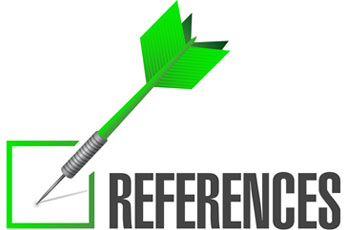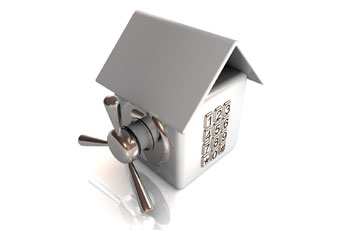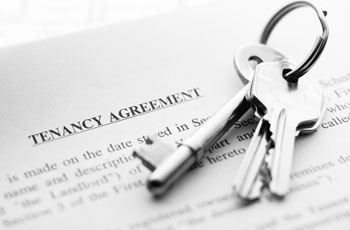The Letting process
At Ashton & Grosvenor we pride ourselves when it comes to attentiveness and care to our tenants. We aim to respond to all enquiries within 24 hours.
Once you have found a home through us we will maintain strong communications to make sure your move goes smoothly and any negotiations we have made on your behalf are met prior to your move in date.
1 Finding a property

As a tenant it is vital that you choose a landlord and letting agent that you can trust. As a member of the property ombudsman Ashton & Grosvenor operate under strict standards of professional and ethical practice with complete transparency so you can avoid unwelcome fees or legal hiccups throughout your tenancy.
Narrow your search
When you start the search for your ideal home it is worth considering your requirements:
- Think about the location you’d like to live in
- Consider your ‘must have’ list- what do you really want?
- What’s your budget? Would you pay more for the right property?
- How long do you need the accommodation for? Is it a stop gap or a long term solution?
- When would you like to move in? Work backwards and start your search around six to eight weeks before this
Our top tip: Budget carefully - allow for council tax and the cost of all utilities, which you’ll normally have to pay for.
Once you have found one or more properties which meet your requirements, a lettings consultant will take you on viewings so you can see the property in person.
Our top tips for viewings
- Check out the space inside cupboards and wardrobes for storage space but remember if the property has a tenant you should respect personal property and ask before delving into cupboards
- You’ll need more than just an emotional connection- Enquire about mobile phones reception, cable/ satellite dish, broadband availability and electrical sockets to stay connected in your new home
2 Securing a property

The rental market moves much faster than the sales market so if you see the perfect property, you may have to act quickly to secure it.
We recommend always being prepared with the relevant documents such as a form of identification and confirmation of your address.
Once you have found the right flat or house you’ll need to put a one week holding deposit down to state your intention, this will contribute towards your first months rent. This is non-refundable if you withdraw from the property or have provided false information that results in your reference and credit checks failing
3 Credit and reference checks

You will be asked to give references to your prospective landlord and letting agent to confirm that you have rented in the past without any major problems. As part of this process Ashton & Grosvenor may also request further details:
Referencing criteria
- Three years’ address history
- Landlord details for any property rented in the last three years
- Confirmation of earnings per annum that are equal to the monthly rental fee multiplied by 3
- If you’re retired, then your (joint) pension per annum will also need to equal 30 times the monthly rental
- No adverse credit in the form of a county court judgment, bankruptcy order or similar
- If you’re self-employed, either an accounts reference or to provide evidence of the last three years’ tax return
- A guarantor that will meet the critieria if you don’t, the guarantor must have an income or pension of 3 x the annual rent, they must also pass a credit check
4 The deposit

The deposit is held as the landlord’s need to cover for any excessive damages that need to be repaired at the end of the tenancy.
If Ashton & Grosvenor is managing the property on behalf of the landlord, the deposit will be registered with the DPS.
However, if the landlord manages the property themselves, we’ll inform you what deposit scheme the landlord will be using and the terms and conditions of that scheme will form part of your Tenancy Agreement.
5 Tenancy Agreement

A Tenancy Agreement is a legally binding document that sets out the terms of the tenancy and is drawn up to ensure the rights and obligations of both the tenant and the landlord are adhered to.
All relevant parties will be asked to sign this document, which agrees the responsibilities of the landlord and tenant.
This may include such responsibilities as; you must tell your landlord if you are going away for longer than 14 days, you must not use the property as a business.
6 Safety regulations and insurance

Safety first
We advise all our landlords on their legal responsibilities for keeping their tenants safe from harm, by making sure their property and its contents (if furnished) meet the UK’s legal safety standards.
Insurance
Tenants often overlook the need to take out contents insurance when renting a property. Ashton & Grosvenor can help point you in the right direction.
7 Moving in Day

At Ashton & Grosvenor, when the landlord accepts your offer, your lettings consultant will put all the details together and call you to confirm all the arrangements and will draw up your tenancy agreement and other important documentation.
You’ll also be issued with a ‘moving in’ invoice for payment at least 48 hours from the moving in date. This includes:
- First month’s rent
- Deposit
- Future rent payments will be made monthly and taken by standing order in advance - we’ll give you all the forms to complete
With your references, paperwork and invoices complete, it’s time to move in!
Your keys will be available to collect either at our local branch or at your check in appointment from either the landlord or inventory clerk-dependent on the service level your landlord has selected. (Your Move Manager will confirm this to you beforehand).
Our top tip: Remember to inform your utilities provider and the local council of your move.
The inventory
The inventory is a detailed list of the contents and condition of the property at the point that you move into it. By both parties agreeing that the inventory is correct at the start of the tenancy, any risk of disputes at the end of the tenancy will be minimised. We recommend therefore that you thoroughly check the inventory before you sign. On Ashton & Grosvenor’s managed property, an Independent Inventory Service will prepare this document for the landlord.
8 Property inspections

Property Inspections
The property you are renting is a large investment for your landlord, so they will arrange visit days to meet with you at the property and check that everything is in order, usually only a couple of times a year. Of course, if anything breaks down or needs repairing then the landlord will visit the property more often to ensure the property maintains in good condition for you to live in.
Your Property Manager
A managed property will also receive regular inspections visits (carried out by your property manager) which will generate photographic reports. Both you and your landlord will receive copies of the report, so that everyone is aware of the property’s current condition and disputes can either be avoided or easily resolved.
9 The next step

Once you are nearing the end of your tenancy period you will need to decide whether to extend your stay or move out (remembering to give notice in accordance with your tenancy agreement in writing).
a. Staying put
If you do want to renew the tenancy, we will liaise with you directly and send you all the necessary paperwork to complete. If your circumstances have changed, some new checks may be needed, but this will be advised on at the time.
Our top tip: Remember the landlord at this stage will be within his/her rights to serve notice on your tenancy if they need the property back or there have been any persistent issues.
b. Moving out
If we manage the property on behalf of the landlord, we’ll arrange a check out with an independent inventory company (carried out on the last day of your tenancy) to ensure the property is left in an appropriate condition - at this point, you’ll hand back the keys. If the landlord manages the property, you’ll need to liaise with them directly in order to arrange a time and date to meet there, complete a check out and hand the keys back.
Deposit
After serving your notice you’ll need to ensure that the property is left in good condition in order for you to be entitled to your full deposit back. If there are no deductions or disputes and all the necessary forms are filled out correctly by you and by the landlord, your deposit should be returned ten days after the deposit release agreements have been received.
Pardoning normal wear-and-tear, if the property is in the same condition as when you moved in, getting your deposit back should be no problem.
Here’s what to do next:
- Give the property a thorough clean, including carpets, windows, walls, skirting boards, doors etc and furniture (if necessary hire a professional cleaner)
- If it’s your responsibility, tidy up the garden and clear away any rubbish
- Return all of the keys
- Remove all of your personal belongings
If you need any help either before or after your tenancy please contact us and we’ll be happy to help.






